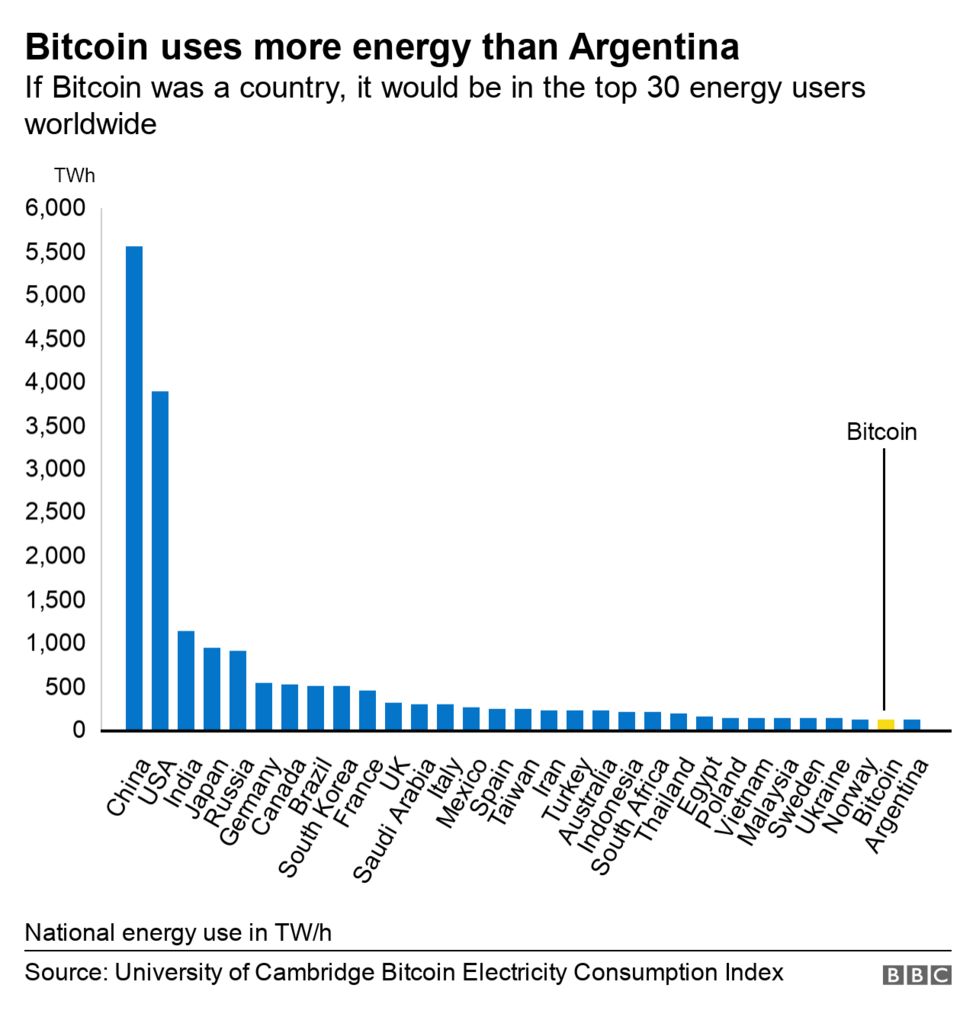The environmental impacts of crypto-mining are huge and drastic. Like every other mining industry, cryptocurrency requires high energy consumption for mining coins. In this article, we will go into detail about the unsustainability of current methods of mining coins. Moreover, we will also discuss the new developments in the industry which might be able to change the game for good.

What is Crypto mining?
Well, to fully understand the consequences of cryptocurrencies on the environment. We must understand what crypto mining is? Crypto mining is a method to generate new coins. Every coin is a digital token worth a given price. As of now, the two biggest coins on the market are Bitcoin and Ethereum. A validation process called mining is used for creating new coins.
Cryptocurrencies are electronically generated tokens with no central regulating authority like a bank or a government. This means the blockchain completely relies on its user for validation and up-gradation of new blocks. Hence, it is quite easy for bad actors to manipulate the process.
How New Coins Come Into Circulation?
To neutralize the threats posed by the anonymity of crypto users, developers sought a method of verification called proof of work. This method is responsible for the development and circulation of most coins.
Proof Of Work:
Most of the crypto transactions occur with recorded history in blocks linked together through a network (Blockchain). Every block contains complete information about a given transaction. In proof of work, miners run crypto software on powerful computers called Nodes. Every Node is connected to other computers on the network and contains a copy of the entire blockchain and the history of every transaction executed on it. These users/miners need to validate the information about a given block.
This can be done by verifying multiple variables like address, timestamp, how much money a sender has in their account, etc. This can be done by solving complex mathematical equations. Users who are successful in validating a transaction get a new coin. The process of validation of information bundled in a block through computer software is called crypto-mining.
Environmental Impacts Of Crypto-Mining:
Now that we have enough information about crypto mining. We can start our discussion on the environmental impacts of cryptocurrencies. As hinted above, cryptocurrency mining consumes high energy. And most of the energy used for mining comes from non-renewable sources. Although, there is no exact methodology to measure this consumption. But the figure can be calculated by variables like the network’s hashrate and consumption by commercially available mining rigs. According to The Cambridge Bitcoin Electricity Consumption Index, Bitcoin used an estimated 85 Terawatt-hours (TWh) of electricity, at the point of its production. Another cryptocurrency analytics site Digiconomist, estimated the figure at 103.3 (TWh), through July 9, 2022.
Moreover, in 2020, the US alone generated 85 million pounds of carbon dioxide by mining (0.85 pounds of carbon dioxide per kWh). And the amount of carbon dioxide produced by mining is increasing at alarming levels as more miners join the competition with their mining rigs. This intense competition among miners to get more coins is a key factor in environmental impact of crypto mining.
Effects of crypto-mining: Greenhouse gas emission
Due to intense competition, miners need more computing power to generate the correct combination. For operation, these powerful computers require a large amount of energy. Besides, there is another problem with cooling down these systems. All of which makes proof of work unsustainable.
According to Cambridge University, Bitcoin consumes more energy than Argentina. Moreover, as rewards are cut in half continually situation becomes more alarming. This means miners need to process more transactions with cheaper electricity. It is also estimated that, between 2015 and 2021,Bitcoin consumed 62-fold more energy. Cambridge University estimates that only 39 percent of the total energy used by cryptocurrencies comes from renewable sources.

Furthermore, The greenhouse gas emission by these rigs is disastrous for climate change. Let us take an example of a mining rig called Greenidge Generation. A former Coal Plant based in Dresden, New York. It is estimated that when Greenidge Generation became the largest mining rig of cryptocurrency in the US. Its greenhouse gas emissions grew ten-fold from 2019 to 2022. Although Greenidge Pledges to become carbon neutral, all the efforts to negate the impact of carbon emissions seem futile. Furthermore, A study on the impacts of cryptocurrency on climate change estimates that bitcoin emissions can push global warming above 2°C.
Electronic Waste Of Crypto Mining:
Most of the equipment used to mine new coins becomes obsolete every 1.5 years. Especially, Application-Specific Integrated Circuit (ASIC). Each ASIC is designed to mine a specific type of currency. This means that a Bitcoin ASIC will mine only bitcoins, which results in an enormous amount of E-waste. Even if most cryptocurrencies are mined from renewable energy sources, their electronic waste problem remains.

Most Impactful Countries:
According to Cambridge University, three countries top the list when it comes to bitcoin mining; US, China and Kazakhstan.
United States:
According to Cambridge Centre For Alternative Finance, about 38% of crypto-mining takes place in US alone. And the country heavily relies on fossil fuels for its energy production.
China:
According to Centre For Strategic And International Studies, about 76% of energy produced and consumed in China is from non-renewable energy sources. Whilst, China shares 21% of Global hashrate.
Kazakhstan:
Cambridge Centre For Alternative Finance, suggests that Kazakhstan accounts for 13% of global crypto-mining and produces energy largely from fossil fuels.
Therefore, we can see that three countries that are heavily dependent on fossil fuels account for most of the global crypto-mining.
NFTs:
NFTs are unique digital artwork of photos, videos, or music stamped with strings of code. Each NFT is stored on a blockchain. The original NFT belongs to a unique buyer. Although, users can view and copy them. Ethereum creates NFTs. Moreover, It has been estimated that one NFT generates 440 pounds of carbon. There is a consensus among many digital artists to create environment-friendly NFTs in the future.
Can Crypto-Currencies Become More Sustainable?
There is no central authority to regulate cryptocurrencies. Moreover, millions of dollars have already been invested in infrastructure and networking. All of this makes transitioning to renewable sources more difficult for miners. However, there are some notable changes taking place right now. Which will eventually prove fruitful in the long run.
Apart from that, Junior Theomou, founder of Miners Defi suggests that we can make mining sustainable by moving miners to the part of the world where renewable energy is the primary source of producing electricity. According to him, “When [mining] got banned in China, people moved to the US,” Theomou states. “So it’s concentrated. We need to have Bitcoin mining going on in many places in the world.” The less concentration we have in fossil fuel-dependent countries, the more mining and proof of work becomes sustainable.
The Crypto Climate Accord, is another initiative, aiming to make Blockchain run on hundred percent renewable energy by 2025. There are 40 projects under this accord. It suggests moving the Proof Of Work mechanism to areas with excess renewable energy. Moreover, This accord motivates miners to implement energy-efficient validation methods in the mining process.
To negate the environmental impacts of crypto-mining, Ethereum is planning to cut down its energy usage to 99.95 percent by 2022. The plan is to move the validation method from Proof Of Work to Proof Of Stake. Proof of stake doesn’t rely on complicated mathematical puzzles to generate a new coin. Instead, it works like a lottery. Potential Validators stake their Eth coins. As miners stack more coins, The probability of winning the bid increases. If implemented correctly, it will be huge for lessening the environmental impacts of crypto-mining.
In order to increase the market and attract more people to crypto-currencies. We must find a sustainable way to mine these coins. According to R.A. Farrokhnia, the executive director of the Columbia Fintech Initiative. The future of cryptocurrencies lies in their greener evolution. Young programmers are developing future cryptocurrencies. And they are more environmentally conscious and hopefully, they will consider the Complexities of Today’s world, and Implement them in their work.
By
Fatima Mateen


